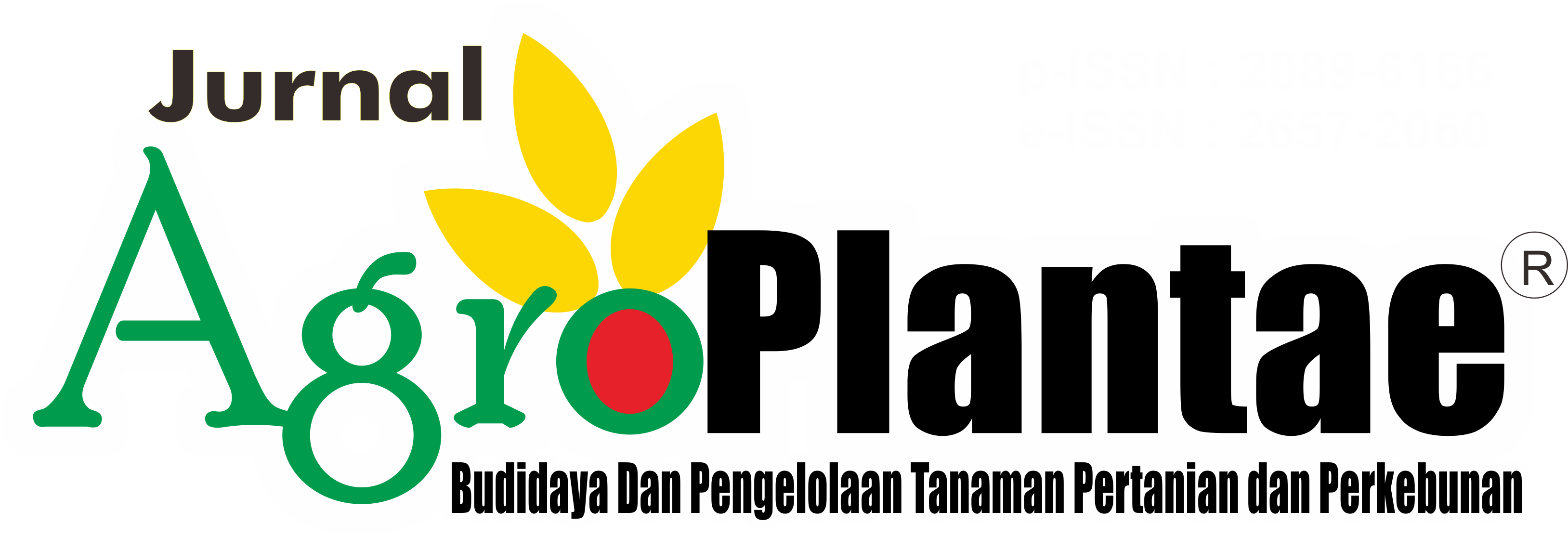FORMULASI PUPUK ORGANIK LIMBAH KULIT KOPI DENGAN PENAMBAHAN TANAMAN PENGHASIL NITROGEN TERHADAP PERTUMBUHAN BIBIT KOPI ROBUSTA (Coffea canephora L.)
Abstract
The increase in coffee production in Indonesia has resulted in an increase in by products in the form of coffee skin waste, which can be processed into organic fertilizer. The purpose of this study was to determine the formulation of organic fertilizer that gives the best effect on the growth of robusta coffee seedlings. This study used a Randomized Group Design (RDB) with the treatment of various formulations of coffee skin waste organic fertilizer with the addition of nitrogen producing plants, namely without coffee skin waste organic fertilizer (soil) or control (P0), coffee skin waste organic fertilizer without the addition of nitrogen-producing plants (P1), coffee skin waste organic fertilizer with the addition of babadotan plants (P2), coffee skin waste organic fertilizer with the addition of mucuna plants (P3) and coffee skin waste organic fertilizer with the addition of lamtoro plants (P4). The dose given per polybag was 300 grams/polybag. The nutrient content of the organic fertilizer formulation with the addition of lamtoro plants produced the highest nutrient content compared to the addition of mucuna and babadotan leaves, namely N by 1.88%, P by 0.50% and K by 3.14%. In the observed variables, namely plant height and stem diameter, the formulation treatment with the addition of lamtoro produced the highest plant height and largest plant diameter, but was not significantly different from the other treatments. The organic fertilizer treatment with the addition of lamtoro plants also produced the highest number of leaves and was significantly different from the soil treatment (control) and treatment with the addition of babadotan plants, but not significantly different from the formulation treatment with the addition of mucuna and treatment without the addition of nitrogen producing plants.








